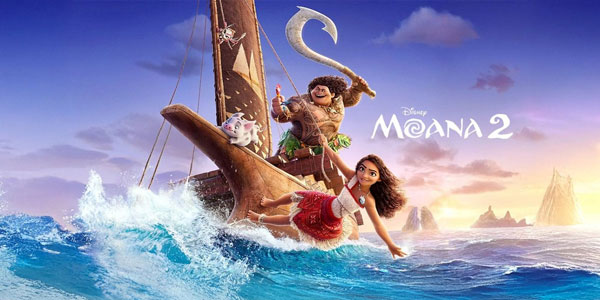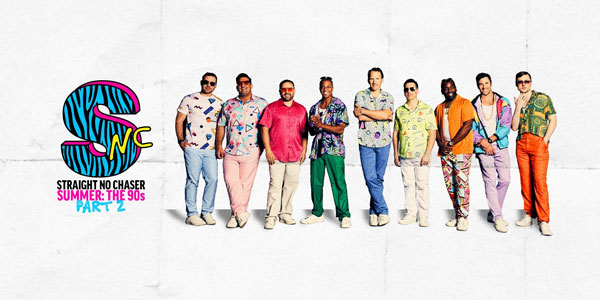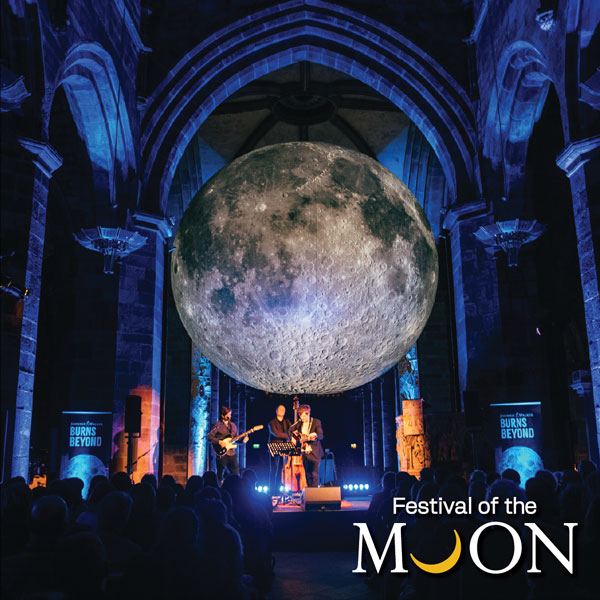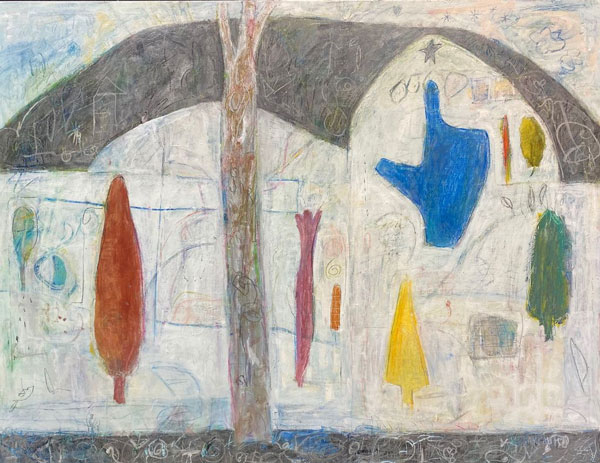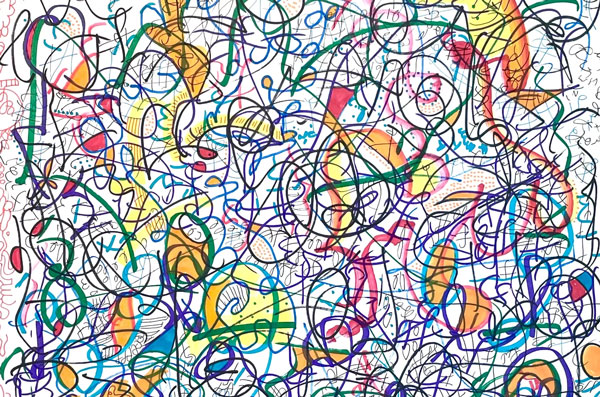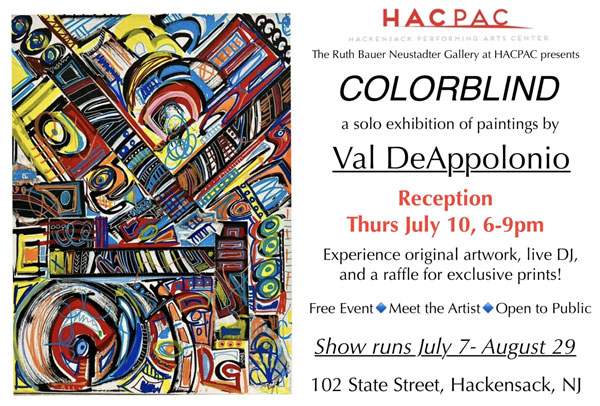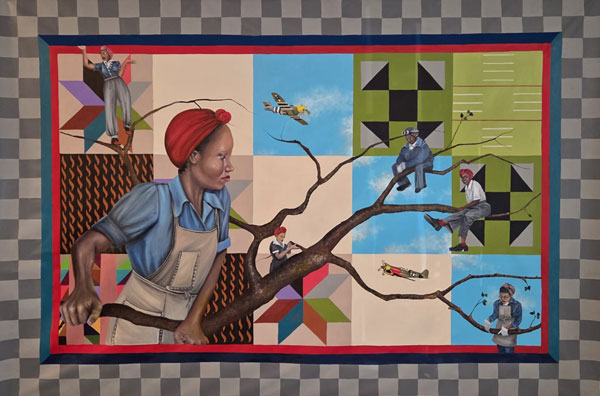By Ilene Dube, JerseyArts.com
originally published: 09/30/2021

The debate over whether it was Kandinsky or Hilma af Klint who created the first abstract painting falls into perspective when visiting Color Riot! How Color Changed Navajo Textiles, on view at the Montclair Art Museum through January 2, 2022.
Even though this viewer was prepared by the exhibition’s title, seeing these woven works still dazzled.
One of the labels notes that the brightly colored yarns have faded over time, yet it’s impossible to envision reds and ochres any more vibrant.
I found myself wondering whether Piet Mondrian or Paul Klee had been influenced by Navajo design, but unlike those legendary artists, the names of the weavers – and they were mostly women – did not survive alongside their artwork – exhibition labels state “Artist Once Known.”
The exhibition at the Montclair, which has collected Native American art since its founding in 1914, is rooted in the experiences of the Diné, or Navajo, and shows “striking works and their historical contexts from the perspectives of the Indigenous co-curators and artists,” says Curator of Native American Art and exhibition coordinator Laura Allen.
“We want to show the social and technological changes that created new opportunities in color and form for textile weavers.”
Having originated at the Heard Museum in Phoenix, Arizona, the exhibition demonstrates how, by using abstraction, balance, and hand work, “the weavers in the 1800s were bursting with creativity. The work explodes with ideas and intention.” Despite the complex calculations required to set up a loom, most Navajo artists began without a sketch, working from their vision.
As I’m pondering Navajo influence on the Modernists, the Navajo themselves were influenced by Hispanic and Mexican weavings. There are also weavings that may have been influenced by an American quilt design and the pattern of a linoleum floor. “This illustrates the intercultural history of art,” continues Allen.
One section of the exhibition focuses on weavings made by contemporary Navajo artists, using present-day looms much like those of their ancestors – none of the looms relies on digital technology. However, unlike the historic weavings, the contemporary works are all attributed to named artists and accompanied by statements, some of which describe responses to the world we live in today.
“I continue to maintain my culture’s traditions in weaving because it spiritually represents a gift given from our ancestral grandmothers,” writes artist Marilou Schultz. “My traditional Navajo way of life and the way I think and respond to the world around me all give great influence to the form, patterning, and art in my rugs and tapestries.”
Between 1863 and 1868, the U.S. government forcibly marched 10,000 members of the Navajo more than 300 miles to internment camp Bosque Redondo in Fort Sumner, New Mexico. Many died from the journey or suffered additional brutality and mistreatment in the camp. In 1868, the survivors signed a treaty enabling them to return to their homeland and establish the sovereign Navajo Nation.
According to exhibition materials, weavers had unprecedented freedom to experiment following sovereignty. They used mass-produced wool yarns from the Germantown neighborhood of Philadelphia, brightly colored from aniline dyes (before this, dyes were made from natural materials such as sumac, piñon gum, indigo, and cochineal).
Influenced by Hispanic textiles they had seen while in internment, the weavers’ “vivid expressions of ingenuity and autonomy made in the decades after Bosque Redondo… testify to the resilience of Navajo communities and the innovation possible.” Among the influences from Hispanic textiles was a vertical orientation.
Velma Kee Craig, the Diné co-curator from the Heard, says the weavings here “are creations of weavers who wove for themselves – they are vibrant and unrestrained in both color and design.”
Weaving was a key way to heal from the trauma of internment. Also, Navajo communities were impoverished after imprisonment, and the weavings were a way to build back.
The earliest weavings were utilitarian, from chieftain blankets and coming-of-age dresses and serapes, to blankets and doorway coverings for the hogans (dwellings). These were traded extensively.
The railroad came to the Southwest in the 1880s, bringing an influx of non-Native tourists. Fred Harvey, the hospitality scion who developed hotels and restaurants for railroad travelers, most notably at the Grand Canyon, relied on Native American design aesthetics to galvanize tourism in the Southwest.
By the 1890s, non-Native traders developed design stipulations in an attempt to appeal to Euro-American tastes. Colors became muted, and designs were tailored to look suitable in Victorian homes. Color Riot! remains focused on the period after internment, when the weavers were strongly reflecting their own design ideas.
The sheep from which the wool comes were not native to the Americas; they were bred with sheep brought to the continent by Spanish Conquistadors in the 1600s and became the first domesticated sheep in the New World. Low in lanolin, Navajo-Churro fleece requires little water for washing, and can be spun directly from the raw fleece without time-consuming carding. Yarn spun from this type of wool is extremely strong and durable. But by the 1860s, with Westward Expansion, the sheep, which had become an integral part of Navajo life and culture, were slaughtered by American troops.
Scholars believe that the Diné, whose reservation straddles more than 27,000 square miles of land in Arizona, Utah, and New Mexico, were peoples originally from Northwest Canada, and first settled in the Southwest during or after the 14th century. Inspired by the environment they saw, weavers created designs with diamond, cross, and zigzag shapes. Some were used in ceremonial practice and one weaving has, at its center, a Spider Woman hole for the spirit of the weaver to pass through once the work is complete – in Navajo lore, it was Spider Woman who taught them to weave.
The Montclair Art Museum added its own element to the traveling exhibition, in collaboration with Larissa Nez, an Art Table fellow who grew up on a Diné reservation. The room “highlights perspectives on weavings by culture bearers who are not weavers, and how weaving is integrated into their culture,” says Allen.
In a video curated by Nez, contemporary Diné artist Ramona Keoni weaves a textile for one of composer Connor Chee’s piano pieces. Each composition was inspired by an element of Navajo culture.
“When I was thinking how I would create music that sounds like weaving,” writes Chee, “I thought if the loom were an instrument, it would sound harp like. (Weavers’) fingers are so dexterous. That relates to what I do on the piano.”
“Despite everything that happened to the Diné,” says Allen, “the weavers continued to innovate, experiment, and maintain resilience while holding on to their cultural roots.”
Color Riot! How Color Changed Navajo Textiles is on view at Montclair Art Museum, 3 South Mountain Avenue in Montclair through January 2022. Mark your calendars for these upcoming programs associated with the exhibit:
* Thursday, December 9, 7 p.m. - Babson Conversation between Venancio Aragon and Eric-Paul Riege, moderated by Laura Allen
* Friday, December 10, evening - Teen event/program with Eric-Paul Riege
* Saturday, December 11, time TBD - Eric-Paul Riege durational performance in Color Riot! galleries
About the author: Driven by her love of the arts, and how it can make us better human beings, Ilene Dube has written for JerseyArts, Hyperallergic, WHYY Philadelphia, Sculpture Magazine, Princeton Magazine, U.S. 1, Huffington Post, the Princeton Packet, and many others. She has produced short documentaries on the arts of central New Jersey, as well as segments for State of the Arts, and has curated exhibitions at the Trenton City Museum at Ellarslie and Morven Museum in Princeton, among others. Her own artwork has garnered awards in regional exhibitions and her short stories have appeared in dozens of literary journals. A life-long practitioner of plant-based eating, she can be found stocking up on fresh veggies at the West Windsor Farmers Market.
Content provided by
Discover Jersey Arts, a project of the ArtPride New Jersey Foundation and New Jersey State Council on the Arts.
FEATURED EVENTS
To narrow results by date range, categories,
or region of New Jersey
click here for our advanced search.



